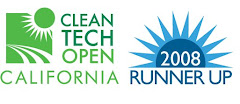 From Joseph Romm in Grist:
From Joseph Romm in Grist:On Friday January 16, the U.S. Climate Change Science Program actually released four major Synthesis and Assessment reports. You may remember the last report the CCSP released -- U.S. Geological Survey stunner: Sea-level rise in 2100 will likely "substantially exceed" IPCC projections, SW faces "permanent drying" by 2050. I was told by scientists knowledgeable about the CCSP process that all of the major impact reports were slowed down in the review process to make sure they came out after the election.
So what are the reports the Bushies have tried to bury? From the CCSP website:
Final Report of Synthesis and Assessment Product 4.1 (Coastal Sensitivity to Sea-Level Rise: A Focus on the Mid-Atlantic Region) is posted online. See also press release from the Environmental Protection Agency (EPA), and EPA web-page. (posted 16 Jan 2009)
Final Report of Synthesis and Assessment Product 4.2 (Thresholds of Climate Change in Ecosystems) is posted. See also press release from the U.S. Geological Survey (USGS). (posted 16 Jan 2009)
Final Report of Synthesis and Assessment Product 2.3 (Aerosol properties and their impacts on climate) is posted online. See also press release from the National Aeronautics and Space Administration (NASA). (posted 16 Jan 2009)
Final Report of Synthesis and Assessment Product 1.2 (Past Climate Variability and Change in the Arctic and at High Latitudes) is posted. See also press release from the U.S. Geological Survey (USGS). (posted 16 Jan 2009)
These are all substantive and comprehensive studies, almost on a par with the IPCC's Fourth Assessment.

















